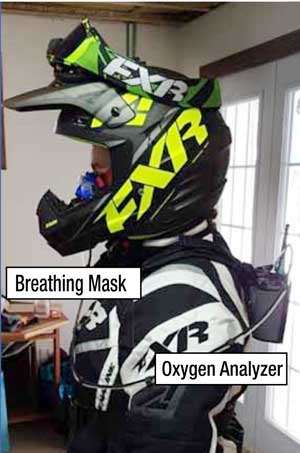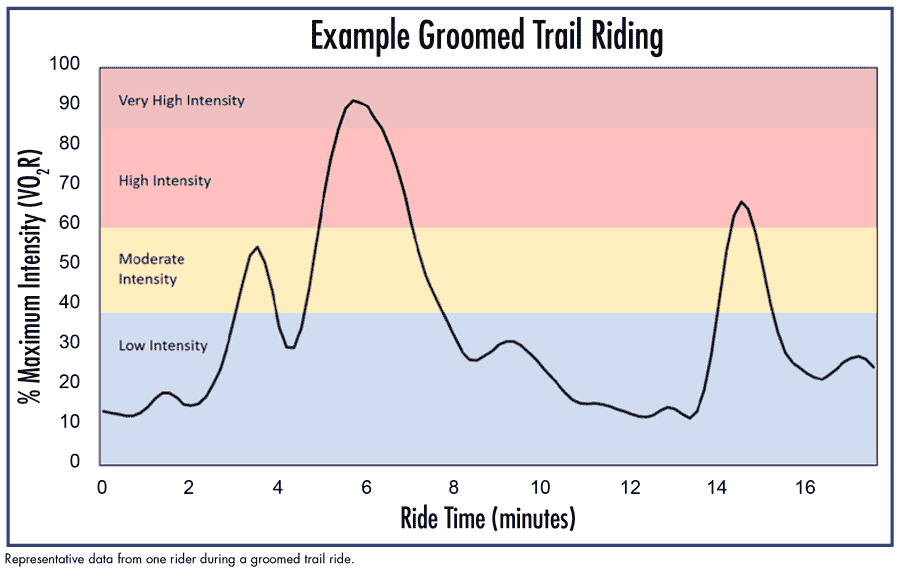The Canadian Council of Snowmobile Organizations (CCSO) released a Snowmobiling Physical Activity Health Study which demonstrates the health benefits of snowmobiling.
The document includes physiological data from field testing in Ontario, British Columbia, and Quebec. It also includes a literature review investigating the potential benefits that snowmobiling could have on mental health.
The research summarized in the document was carried out independently by researchers at the University of Guelph.
Snowmobiling a Good Form of Physical Activity
A snowmobile ride can involve different intensities of physical activity depending on the terrain. Snowmobiling can contribute to every adult’s goal of achieving at least 150 minutes of weekly physical activity.
Snowmobiling Good for Mental Health
By summarizing field work and related research, the document aims to highlight the potential benefits of snowmobiling on physical and mental health. These benefits can be accrued because snowmobiling involves physical activity, outdoor time, exposure to nature, and socialization. All are aspects of our lives often neglected during the winter. These factors position snowmobiling as an excellent activity for people of all ages as part of a healthy lifestyle.
It also found that performing physical activity via snowmobiling could be an effective way to combat the symptoms of Seasonal Affective Disorder (SAD) which most frequently occurs in the winter.
Summary of Physical Demand Research Design

Researchers collected information from more than 4,000 people who rode at least once per week. They found that on average, riding a snowmobile used 5.6 METs. This means that a snowmobile rider is using 5.6 times as much energy while riding than if they were sitting at home watching TV. The 5.6 METS used during a typical ride is similar to the amount of energy used during downhill skiing or snow shoveling and categorizes snowmobiling as moderate intensity physical activity.
It is recommended that people do 150 minutes of moderate to vigorous intense physical activity (at least 3 METs) per week to maximize health benefits and to prevent a variety of health risks. Therefore, a snowmobile ride can contribute to this weekly recommendation, which will reduce the risk of developing a variety of diseases.
Peripheral Tasks
There are a variety of tasks related to snowmobiling, while not actually riding, that could also be considered physical activity. These may include:
- Digging a sled out when stuck in deep snow
- Dragging a sled on pavement at a gas station
- Loading up a sled on a truck or trailer
- Lifting the back end of a sled to loosen ice/snow
- Tipping the sled to do a repair or adjustment
- Changing the drive belt or spark plugs
- Clearing the way ahead of obstacles such as fallen branches or drifted snow
Snowmobiling is Good for Your Health
It is well known that physical activity is good for you. Accumulating at least 150 minutes of moderate to vigorous physical activity a week is recommended because it can result in a variety of health benefits regardless of age, ethnic background, or gender.
Health benefits from physical activity include reduced risk of heart attack, stroke, cancer, type 2 diabetes, and osteoporosis. It can also improve fitness, body composition, and mental health. The accumulation of physical activity via snowmobiling could, therefore, result in a variety of health benefits.
The remainder of the document summarizes research that pertains to the benefits of snowmobiling on mental health. In addition to physical activity, snowmobiling could also benefit mental health because it.


You must be logged in to post a comment.